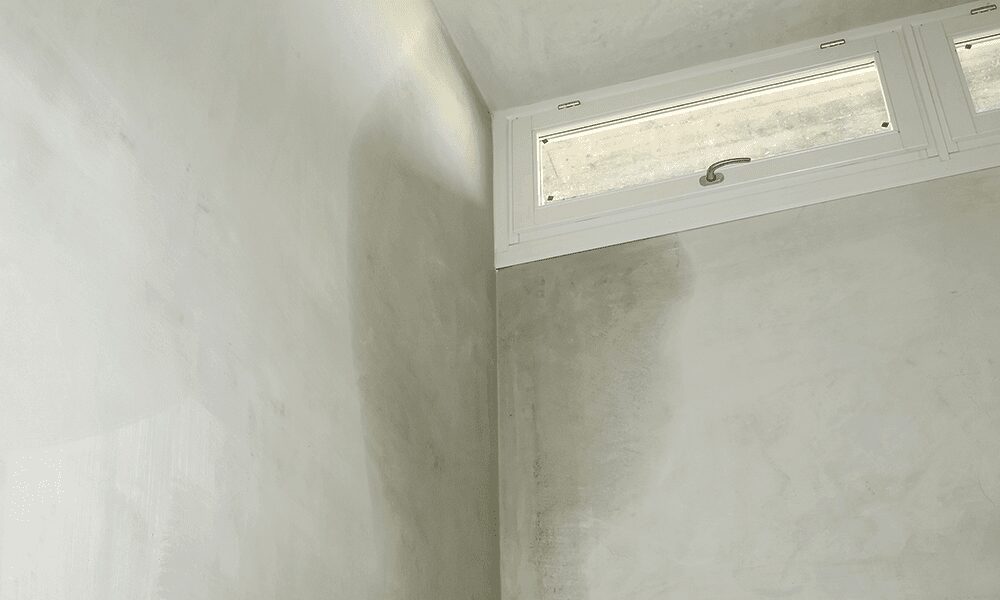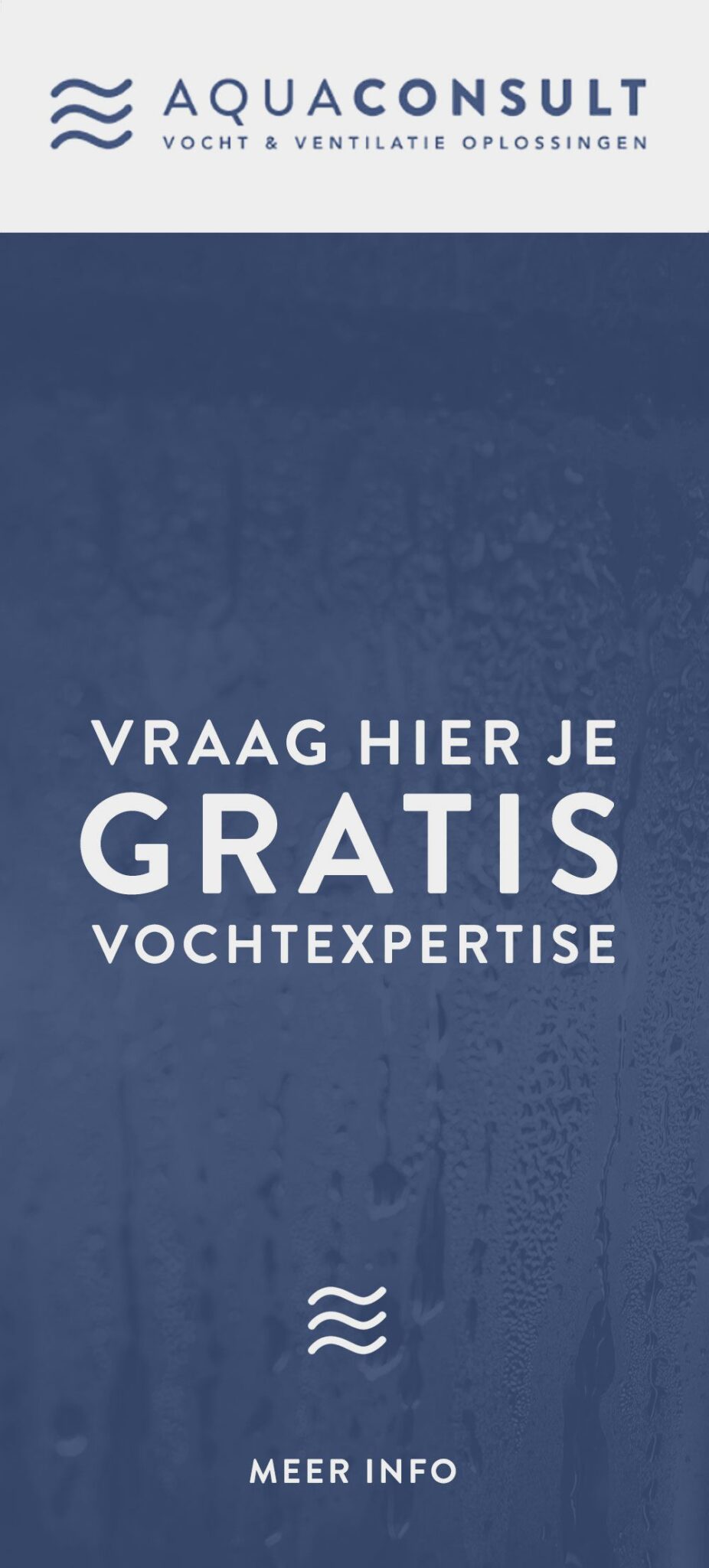There is nothing more annoying than being faced with the facts and seeing that you have moisture spots in your wall. Above all, don't worry, because there is a solution for everything. Only it is important to find out the cause of the damp spots before you can start removing them. Find out how to get rid of damp spots in this article.
Types of moisture spots on the wall
Typically, there are two different types of moisture stains that can affect your walls.
New moisture spots
New or fresh moisture stains occurred recently, indicating a relatively new moisture problem. Often such moisture stains are also still "active. You can recognize them by the color difference between the moisture spot and the dry wall.
Old moisture spots
Old moisture spots are often the result of long-term moisture problems where the source of the moisture has been present for an extended period of time. Such spots range from small brown spots to spots with a white powder.

Consequences of damp spots on the wall
Failure to address the cause of wall dampness will lead to a variety of negative consequences. Consider:
- Health Problems
- An unpleasant odor in the house
- A colder home that is harder to heat
- Damage to your furniture and home, reducing its value
Causes and corresponding solutions of dampness in the wall
The word says it all. Damp spots are caused by moisture. Moisture, in turn, can get you from a variety of causes:
- Rainwater that will eventually lead to penetrating moisture(e.g. wall exposed to rain showers for a long time);
- A leaking pipe or clogged gutter;
- Condensation;
- Groundwater leading to rising damp.
Each cause requires its own solution. Often, determining the cause and determining the needed cause is not obvious, so it is best to leave this to an expert. In addition, moisture stains disappear by themselves after a professional has done what is necessary to solve the moisture problem. So do not hesitate to seek the help of an expert.
Facade exposed to rainwater for too long
Did you get moisture problems due to rainwater coming into contact with the facade over a long period of time? Then chances are that the moisture spots on your wall are due to penetrating moisture. In this case, the moisture spots occur in all kinds of random places, and not only on the ground floor.
The ideal solution to this moisture problem is to have your facade impregnated or hydrophobized. This involves applying a transparent and waterproof layer to the facade using a transparent product. Hydrofuge is a product that makes your exterior walls water repellent. As a result, you will no longer get moisture spots on the interior wall either.

Gutter clogged or leaking
A gutter allows water to leave through the downspout when it rains. If you don't have a gutter, water flows down your facade and you risk exposing your facade to rainwater for too long.
So moisture problems can also be the result of a clogged gutter or a leak in the pipes. Unfortunately, this does not resolve itself; on the contrary, it only gets worse. By the way, a clogged gutter is worse than having no gutter at all, because with a clog, a large amount of water accumulates in one place.
Solving this problem can be done as follows:
- Unplug your downspout and properly maintain your gutter. You can do this simply by taking a ladder and taking out all the leaves that are in it. Especially in the fall, this is important.
- In case of a leak: contact a leak detection company. After all, it is difficult to pinpoint the exact location of the leak. In addition, the plumber can seal the leak purposefully and efficiently.
Excessive moisture
Rising damp is caused by direct contact between a brick wall and a damp wall. In problems of rising damp, groundwater is the main cause. The foundation and walls absorb this water, resulting in the most severe moisture close to the ground, but it can also spread further into the wall. This can cause significant damage to both interior and exterior walls.
The solution? Waterproofing the exterior wall by injecting a chemical product into the wall. A professional injects a moisture-resistant coating into the wall through drilled holes. This coating acts as an artificial barrier against water. After this step, the professional seals the drilled holes with waterproof mortar.

Condensation water
Wherever the air is too humid (think of a bathroom), condensation forms. And this, too, can eventually cause moisture spots on walls. In such places, adequate ventilation is the solution. You know what to do in the bathroom!
What can you do yourself to remove moisture stains on a wall?
As we mentioned, the first thing to do is definitely contact a professional to fix your moisture problem. Only after that can you repair your wall yourself. If you do want to get started yourself, here are a few helpful tips:
- Tackle the cause of the damp wall. If you suffer from rising damp, first make sure that the source of this moisture problem is drained using, for example, wall injections. This involves injecting a new water barrier layer. Ask here for a free moisture diagnosis for a first thorough analysis.
- Remove the wallpaper or remove the paint from your wall with a putty knife.
- Apply a moisture repellent, e.g. Aquaplan.
- Do you have cracks? Fill these up with putty.
- Make sure your wall is not soaked and then apply three layers of moisture-resistant coating.
- When everything is done and the wall is dry, you are ready to wallpaper or paint the wall again.
Attention! The instructions above will help you to remove moisture stains from your wall and not to conjure up mold. It is best to kill fungi with chlorine bleach. After the fungi disappear, rinse the chlorine away with warm water.
Do you suffer from moisture spots on your walls?
You prefer to avoid moisture problems, but if they are there, they just have to go. Period. Unfortunately, solving and removing moisture problems is not exactly a job that can be done in an instant. That's why AquaConsult offers you support you can't say "no" to.
Looking for more information around moisture control? Then be sure to read our blog on moisture problems and solutions.


